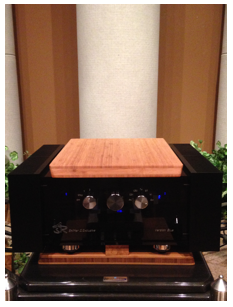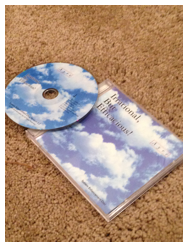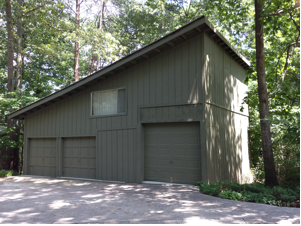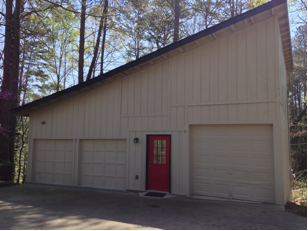Quarter Notes #16 (Volume 4, Issue 4)
- Jun 8, 2019
- 9 min read
Updated: Sep 2, 2020
Dear Get Better Sound & Through the Sound Barrier owners,
Welcome to the sixteenth issue of Quarter Notes, published on October 29, 2014. Quarter Notes is a newsletter for Get Better Sound and Through the Sound Barrier owners, expanding on both, as well as introducing new and timely subjects.
Best email address
Since you’re reading this, the e-mail address with which I sent this QN must have worked. However, the only e-mail address I have is the one associated with your initial Get Better Sound or Through the Sound Barrier order. If you have an e-mail address that you’d prefer to use to receive Quarter Notes notifications, send it to js@getbettersound.com. Be sure to include the e-mail address I used originally, along with the one that you want to use to replace it.
Audiophile Angst
Although this article is about some issues I ran into with my own system, I am including it here as it may very well assist you with your own system – now, or perhaps in the future.
I don’t know about you, but every few years, I always seem to encounter this issue. Just when I have my sound system doing its thing, providing huge musical satisfaction, eventually some change seems to come along and it upsets my musical applecart.
Things were really nice for several years. Then, due to some health issues that I’d had, Pam wanted to move to a one-level home. And so we did, about a year ago. We love our home.
But getting the sound right in my new room has been tougher than I expected. Then, when all was right with the world, and not long after we (the system and me) were singing, it came time to end my LARS distributorship.
Why was it time to call it to a halt? Honestly speaking, I just didn’t want to have to go out and call on dealers and do distributor stuff. I had done it for Avantgarde-Acoustic from 2000-2005 - I knew what was involved to do it right.
Engstrom & Ensgtrom’s THE LARS are great amplifiers. The best I ever heard. E&E deserved an active distributor. So I resigned. I sold the remaining amps back to them and arranged to ship out the demo amp I had used recently.
Time to find another amp.
And so the angst began.
Lots of folks have claimed that Tannoys benefit from a powerful amp. However, I wasn’t knocked out with the more powerful amps that I’d heard with my Tannoys. THE Lars were 36 watts/channel, and so were my Viva Auroras. My Audiopax Model 88s were 30 watts/channel. They all worked nicely with my 96 dB-sensitive Canterburys and provided musical bliss.
Searching for more power, it didn’t matter as to the amp’s configuration – be they solid-state or vacuum tube amps. For me, it isn’t so much how they work – it’s how they reproduce music. A number of them were very good, but they didn’t have the immediacy, the connection with the music that I found with the LARS.
During this time, I read Jeff Day’s review of the ASR Emitter II Exclusive amplifier, plus some other reviews. Jeff’s review (click here to open) was instrumental in helping me to focus my research. I’ve known Jeff since my Avantgarde days. Jeff is often in synch with what I value musically. Maybe more importantly, I know him to be a man of integrity.
Subsequently, after much research & listening, I finally settled on the ASR Emitter II, Exclusive version. Since this is an innovative high-power amplifier that acts like an integrated, (no need for a preamp, and it uses a special technique for ultra-transparent volume control), I could do without a preamp and the requisite IC & power cabling. Even so, with one amp section and three power supplies, The Emitter II Exclusive occupies a huge amount of real estate in any listening room
Simple goal -- not so simple solution
Actually, I wasn’t looking to improve on what I had been enjoying. However, I WAS hoping not to slide too far backwards. After all, THE LARS with a great preamp and associated cabling was at least 3-4 times the price of the (admittedly expensive) ASR.
Some components seem to settle in nicely after a brief period of use. But not my ASR – the “break-in” seemed to take forever. Finally, by the first week in October (2014) I felt that I had done all I knew to do for my sound with the new ASR amp.
Admittedly, I was amazed at how tuneful the bass was. None of that over-damped quality you can get from some high-power solid-state amps. The upper mids and treble were wonderful as well. But even so, I wasn’t connecting to the music in the manner that I had enjoyed with THE LARS Type II amps.
The range from about 250 HZ to 750 Hz just wasn’t providing the Presence & Tone that can connect you to your music. It was fine (maybe even great) by “audiophile standards”, but the musical engagement wasn’t as powerful as I’d hoped.
I eventually did four primary things to make it happen (OK, I admit it – in the last few days, I have had the most powerful listening experiences that I can ever remember). Probably the biggest contributor to the increased musical engagement that I sought was the one thing that I never thought about until about three weeks ago!*
Slight repositioning of speakers
Checked (and corrected) AC polarity
Applied bamboo to the mix...
Used the Ayre IBE disc, cut 7
Details
Slight repositioning of speakers One thing that was particularly unsatisfying was my inability to experience the illusion of the performer being almost tangibly present in the room - as if you could walk over and physically touch the singer or their instrument. This is a powerful effect and can be transformative in your musical engagement. In Through the Sound Barrier, I emphasize the critical aspects of Dynamics, Presence, & Tone. In the particular case that I am describing here, Dynamics were good. However, Presence and Tone – as I was hearing them in late September, after the break-in process was complete - weren’t what I wanted, especially after hearing them in a musically compelling manner for several years. In TTSB, I discuss and demonstrate three types of Presence. Of course, there are not just three, but if you can get your system to differentiate between the three basic categories, you are on the way to getting the Presence issue resolved in a powerfully & musically effective manner. After some experimentation, I ended up slightly reducing the separation between the speakers. Now you might not think that bringing the speakers closer together less than an inch (in other words a half-inch or less from the centerline for each speaker) would be audible, but let me assure you that it is. I’ve been doing this for years, in hundreds, maybe thousands of systems. It’s part of the overall system voicing. In my case, I had voiced the system for this effect with THE Lars Type II amps. But it was off a bit with the ASR. This technique can affect Presence and Tone. When you have everything seemingly right with your seating and speaker locations, if you want to see if you can increase Presence and Tone, there are several techniques that can reveal the answer to you, but slightly changing the stereo speakers’ separation (more or less) is probably the most efficient (and certainly the least expensive) technique to employ. Here’s my analogy – by bringing the speakers slightly closer together, it is as if you are squeezing the performers (that were recorded to be up front) further forward into your room. At the same time, it’s as if the performers that were recorded further away appear to be squeezed a bit further back. What you have to decide is whether or not this change can improve the illusion of performers in your room (or your being transported to the performance venue). I am NOT talking about pinpoint imagery here. Real voices & instruments are not pin-point. They occupy space. Finally, as you reduce the separation slightly, your sound becomes slightly warmer. So this aspect of Tone, along with Presence, will be available for you to decide upon. Conversely, separating the speakers slightly usually results in a bit cooler sound with a bit less Presence. Note – changing separation can result in a change in toe-in, so be sure that if you have toe-in the way you like, that you make the slight adjustment in toe as well. Note 2 – when the resultant separation difference is an inch or less, I doubt that toe-in would really need adjustment.
Checked (and corrected) AC polarity I mentioned AC polarity in the GBS manual and showed the technique for changing it in the GBS DVD. If one or more of your components is connected in the opposite AC polarity from the others in your system, the result is usually a slight grunge added to the sound and a slightly artificial center fill. You probably don’t know it’s there. But once you address it, and the amusical artifacts are removed from the sonic landscape, the results are more musical involvement… Although I had checked my components long ago, it turned out that one of mine had somehow been connected in reverse AC polarity! I have no idea how or when it happened, but I sure liked the effect when I “fixed” it yesterday. Another no-charge improvement. Interestingly, the ASR-centered system benefitted from both “tweaks”.
*Applied bamboo to the mix...(picture below) I had noticed the Internet message board references to bamboo shelves for a while. Of course, this wasn’t for me – I wanted a neutral and isolated mounting technique for my components. But the search for more Presence & Tone with the ASR in the system was still driving me. After some research, I decided to try a few of the IKEA APTITLIG 17 ¾” x 14 ¼” x 1 ¼” bamboo cutting boards to place on my finely adjusted Grand Prix Audio Formula carbon fiber shelves. These bamboo boards are the opposite of what I have espoused once the Grand Prix Audio systems became available, so I only tried it out of simple curiosity, driven by the search for more musically engaging sound. FWIW - I’ve always had all of my components sitting on Cardas myrtle blocks, instead of the feet. Unexpectedly, I loved the results! All of my components were now mounted on the IKEA shelves which were flush-mounted on the GPA shelves. As always, I continued to use Cardas Myrtle blocks to replace the component feet. They are under the chassis and are slightly taller than the components feet. Finally, I tried placing one IKEA bamboo cutting cutting board on top of my ASR amplifier, placing it over the thick ASR acrylic top plate. Voila!
Used the Ayre Irrational but Efficacious disc, cut 7 (picture below) I mentioned IBE in GBS. I still use this cut from time-to-time. When you want to sit down and fall into your music, do yourself a favor and play cut 7 first. Doesn’t have to be loud – play it at a maximum of perhaps 50-60% of your normal listening volume. I still do not know why or how it works, but it does. Since I use computer audio, I simply select that cut in my “IBE” playlist.
Emotional engagement Yesterday, I had a visitor to my listening room. This is a woman who loves music and whose opinion I respect highly. She’s always had a “no nonsense” viewpoint – she’s never been afraid to speak her mind about the sound and the impact of the music. Of course, I’m speaking of my wife. Pam has heard all of my systems over the years, including CES Shows. But something occurred yesterday that has never happened before. She started crying (!) when I played certain songs. The music had touched her so deeply. I should note that Pam had previously heard these musical selections dozens of times, but she had never experienced them so powerfully.
Dynamics, Presence, & Tone Much of what I emphasize in Through the Sound Barrier is based on Dynamics, Presence, & Tone. My recent experience with my system in my room simply underlines its importance.
What is the lesson here?
Old audiophile dogs can indeed learn a few new tricks. In my case, I applied some proven techniques along with some about which I was frankly skeptical. Then I added some that I should have had correct to begin with (it doesn’t hurt to go behind yourself, even if you have a TTSB system log).
If any of this saga makes you wonder, I urge you to try out some of these tips/tweaks. When you can crank your musical enjoyment level up to “11” with little or no expense, what are you waiting for? :) ☺
Greater isolation for RoomPlay Reference sessions – additional construction
The new building/room is finally singing.
When we moved here, I did not realize that my neighbors would run very loud equipment (saws, mulchers, large lawn mowers, weed blowers, etc.) and at the most unexpected (and sometimes inopportune) times.
I was worried that a RoomPlay Reference client would arrive, only to have our session be partially truncated due to external noises. But we’ve been lucky so far.
Even so, it would have certainly happened in the near future, as I have a number of these sessions booked. So I set about to isolate the listening room.
The building was originally a not-too-sturdy storage shed.
We literally built my office and the listening room inside of the former shed. The idea was to have a very good space that didn’t hint at what was inside. This space did not lend itself to adopting advanced building/isolation techniques unless I was willing to tear it down & start over.
With the exception of ultimate acoustic isolation from outside noise, it turned out very nicely.
To further isolate it, some outside layers were required. This was accomplished about 6 weeks ago.
The extra cladding is only around and above the listening room. The new window is fake. There are still no windows in my room – the fake window was included to match the windows on the house, to give it a more unified look.
Invitation
You are hereby invited to book your own RoomPlay Reference session! According to quite a number of clients, it could be the best money you will ever spend on your audio hobby.
To read more, go here: http://getbettersound.com/roomplayreference.html
Breaking Through podcast #7 is available now
Breaking Through #7 has some interesting info about the TTSB CDs, as well as an update on the TTSB project.
Here is a link to #7:
Here is a link to all of the Breaking Though podcasts on iTunes:
Questions or comments?
E-mail me: js@getbettersound.com
That’s all, folks.
Keep on listening!











Comments